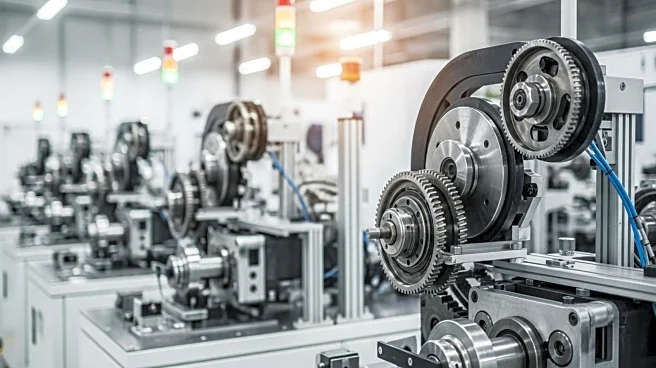What's Happening?
Niron Magnetics has initiated the construction of a new permanent magnet manufacturing facility in Sartell, Minnesota. This plant, which will have an annual production capacity of 1,500 tons, marks a significant development in the magnet industry as it will produce magnets without using rare-earth elements. Instead, the magnets will be made from more abundant materials such as iron and nitrogen, which offer high magnetization. The facility, spanning 190,000 square feet, is being built on the site of a former paper mill and is expected to be operational by early 2027. This project is the result of nearly a decade of research in collaboration with the U.S. Department of Energy and the University of Minnesota. The plant is anticipated to create over 175 jobs and is a response to the increasing concerns over rare-earth supply chains, which are under pressure due to geopolitical tensions and rising global demand.
Why It's Important?
The establishment of this facility is significant for several reasons. Firstly, it addresses the critical issue of rare-earth supply chain vulnerabilities, which have been exacerbated by geopolitical tensions and the growing demand for these materials in various industries, particularly automotive and electronics. By using alternative materials, Niron Magnetics is reducing dependency on rare-earth elements, which are predominantly sourced from a limited number of countries. This move could potentially stabilize supply chains and reduce costs for industries reliant on permanent magnets. Additionally, the creation of over 175 jobs will have a positive economic impact on the local community in Sartell, Minnesota. The involvement of major commercial partners and investors such as Stellantis, Samsung, Allison Transmission, and Magna underscores the industry's interest in sustainable and innovative solutions for next-generation technologies.
What's Next?
As the facility progresses towards its operational phase in early 2027, stakeholders will likely monitor its impact on the magnet market and supply chains closely. The success of this plant could encourage further investment in similar technologies and facilities, potentially leading to a broader shift away from rare-earth elements in magnet production. Companies involved in automotive and electronics sectors may increasingly adopt these new magnets, which could lead to advancements in product performance and sustainability. Additionally, the job creation aspect may prompt further economic development initiatives in the region, enhancing local infrastructure and community growth.
Beyond the Headlines
The development of rare-earth-free magnets also raises important environmental and ethical considerations. By reducing reliance on rare-earth mining, which often involves environmentally damaging practices and geopolitical complexities, Niron Magnetics is contributing to more sustainable industrial practices. This shift could inspire other sectors to explore alternative materials and technologies, potentially leading to a broader transformation in how resources are utilized in manufacturing. Furthermore, the collaboration with academic and governmental institutions highlights the importance of research and innovation in addressing global supply chain challenges.











